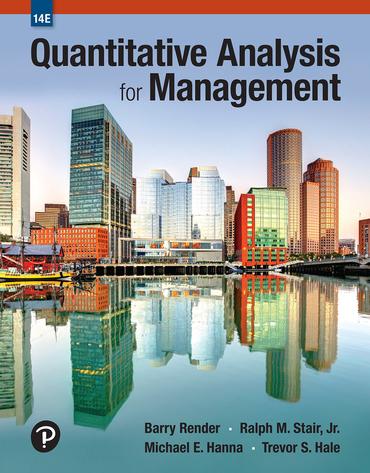Answered step by step
Verified Expert Solution
Question
1 Approved Answer
Suppose a three-factor model is appropriate to describe the returns of a stock. Information about those three factors is presented in the following chart: a.
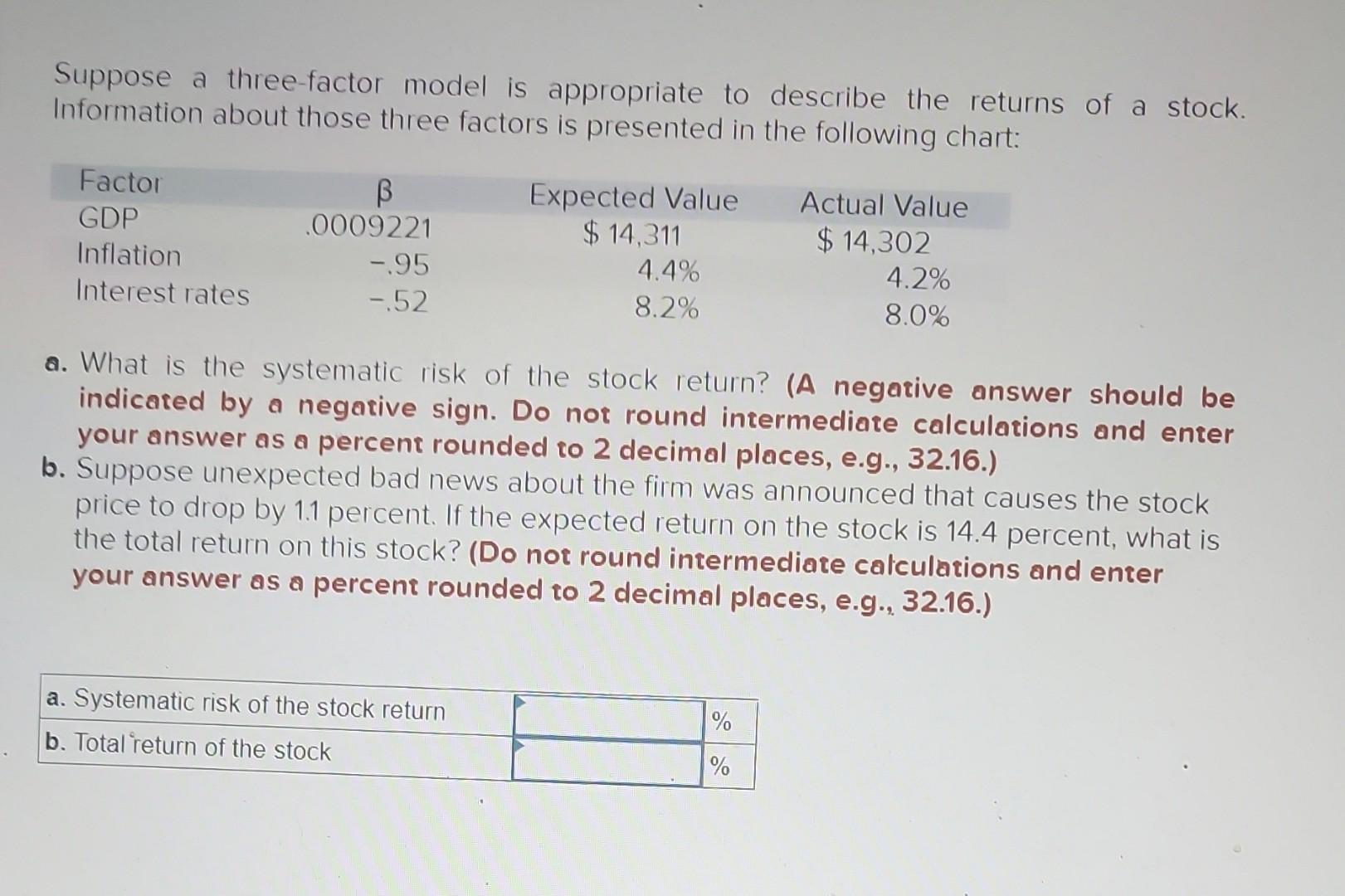
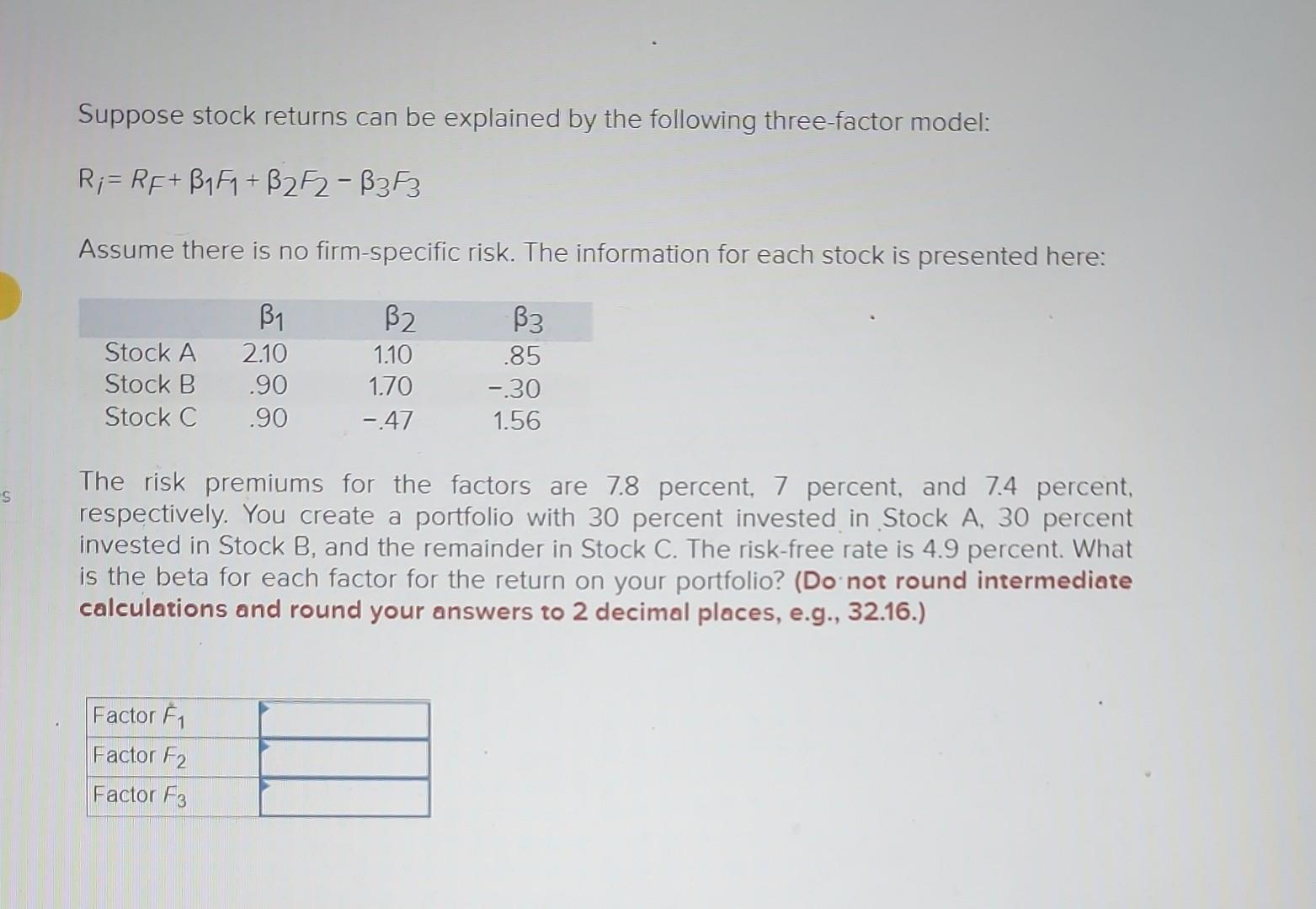
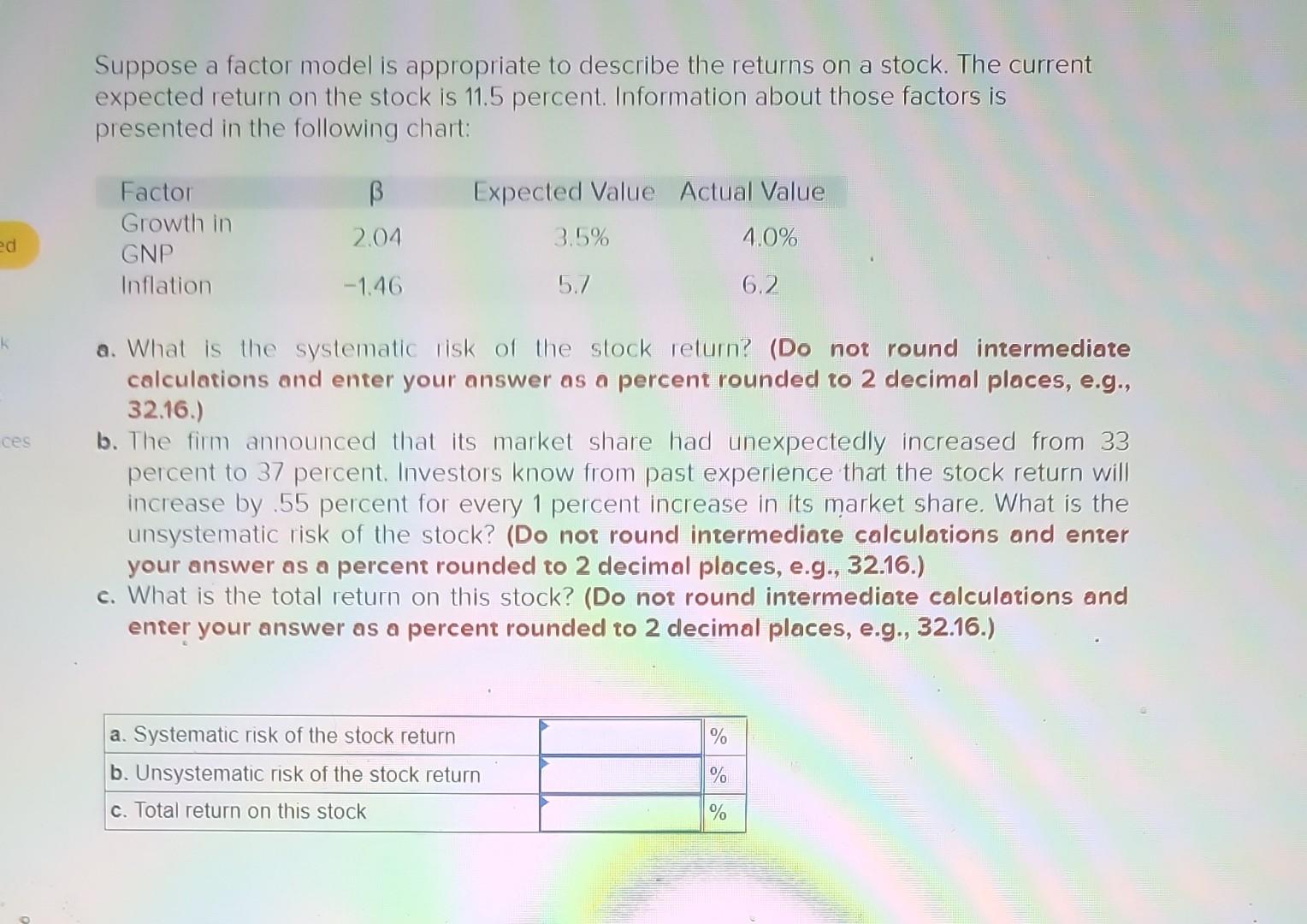
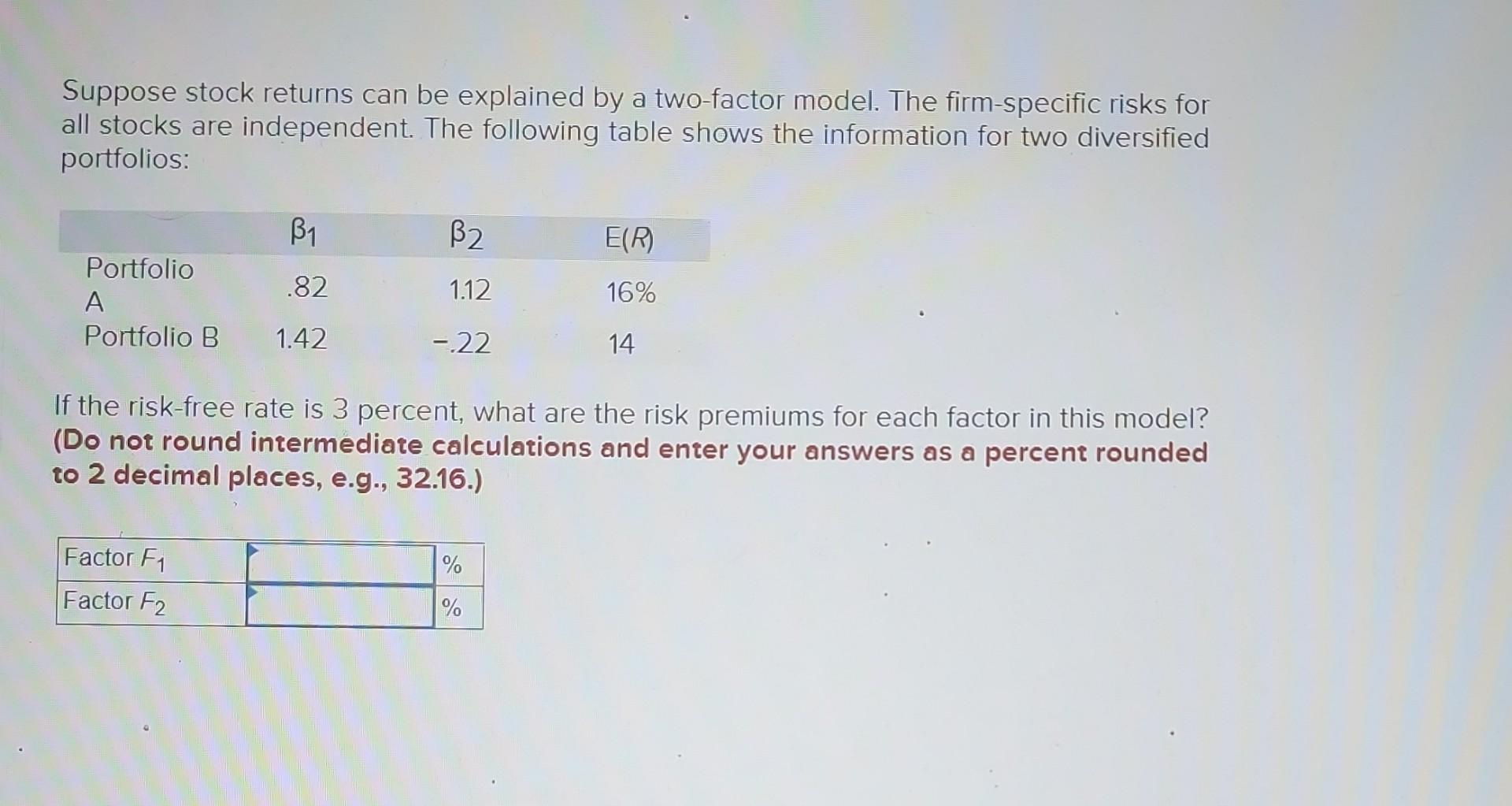
Suppose a three-factor model is appropriate to describe the returns of a stock. Information about those three factors is presented in the following chart: a. What is the systematic risk of the stock return? (A negative answer should be indicated by a negative sign. Do not round intermediate calculations and enter your answer as a percent rounded to 2 decimal places, e.g., 32.16.) b. Suppose unexpected bad news about the firm was announced that causes the stock price to drop by 1.1 percent. If the expected return on the stock is 14.4 percent, what is the total return on this stock? (Do not round intermediate calculations and enter your answer as a percent rounded to 2 decimal places, e.g., 32.16.) Suppose stock returns can be explained by the following three-factor model: Ri=RF+1F1+2F23F3 Assume there is no firm-specific risk. The information for each stock is presented here: The risk premiums for the factors are 7.8 percent, 7 percent, and 7.4 percent, respectively. You create a portfolio with 30 percent invested in Stock A, 30 percent invested in Stock B, and the remainder in Stock C. The risk-free rate is 4.9 percent. What is the beta for each factor for the return on your portfolio? (Do not round intermediate calculations and round your answers to 2 decimal places, e.g., 32.16.) Suppose a factor model is appropriate to describe the returns on a stock. The current expected return on the stock is 11.5 percent. Information about those factors is presented in the following chart: a. What is the systematic lisk of the stock return? (Do not round intermediate calculations and enter your answer as a percent rounded to 2 decimal places, e.g., 32.16.) b. The firm announced that its market share had unexpectedly increased from 33 percent to 37 percent. Investors know from past experience that the stock return will increase by 55 percent for every 1 percent increase in its market share. What is the unsystematic risk of the stock? (Do not round intermediate calculations and enter your answer as a percent rounded to 2 decimal places, e.g., 32.16.) c. What is the total return on this stock? (Do not round intermediate calculations and enter your answer as a percent rounded to 2 decimal places, e.g., 32.16.) Suppose stock returns can be explained by a two-factor model. The firm-specific risks for all stocks are independent. The following table shows the information for two diversified portfolios: If the risk-free rate is 3 percent, what are the risk premiums for each factor in this model? (Do not round intermediate calculations and enter your answers as a percent rounded to 2 decimal places, e.g., 32.16.)
Step by Step Solution
There are 3 Steps involved in it
Step: 1

Get Instant Access to Expert-Tailored Solutions
See step-by-step solutions with expert insights and AI powered tools for academic success
Step: 2

Step: 3

Ace Your Homework with AI
Get the answers you need in no time with our AI-driven, step-by-step assistance
Get Started


